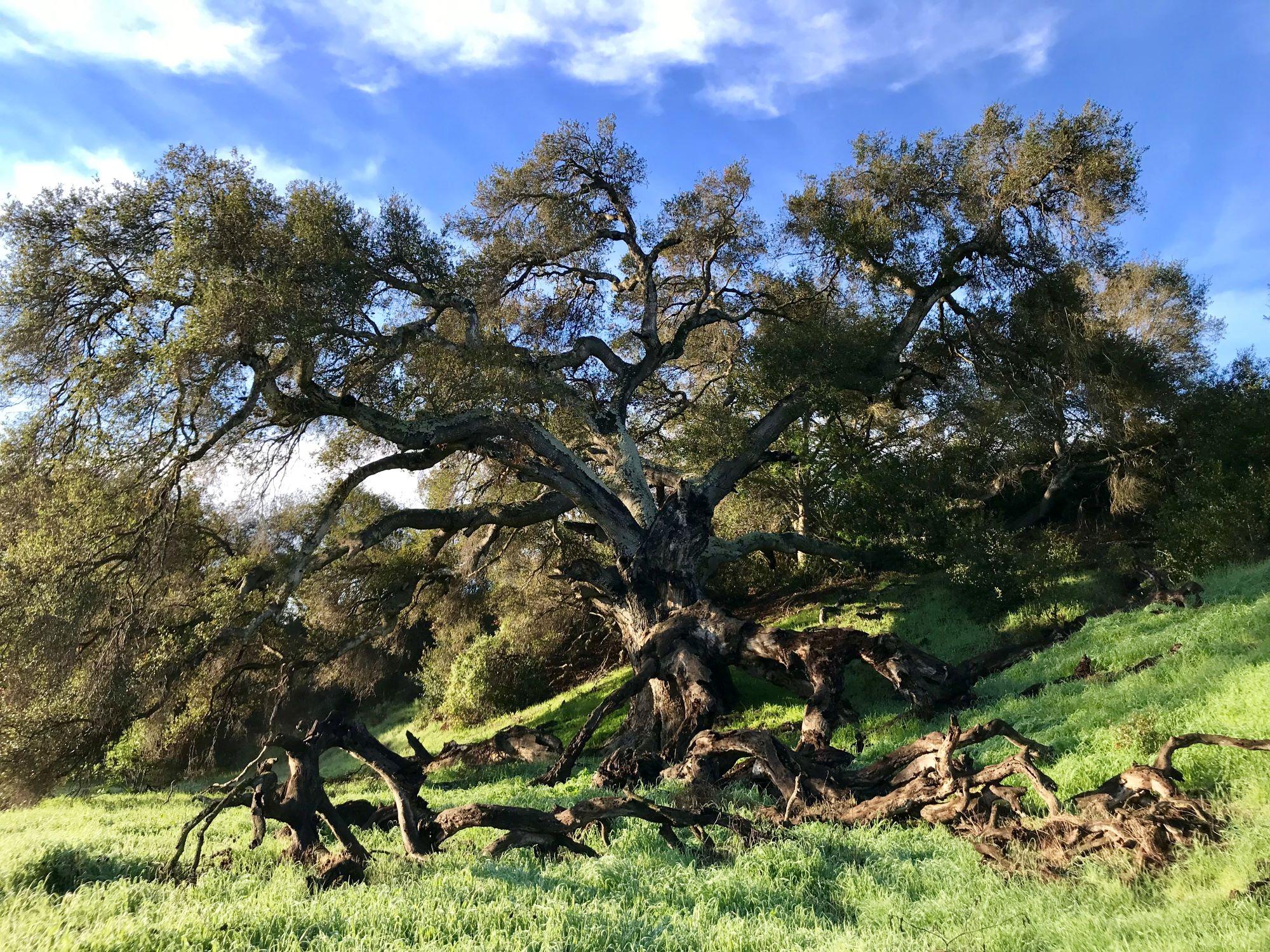
Species Spotlight: Coast live oak
by: Tom Millington
Coast Live Oak
Coast live oak (Quercus agrifolia) is the most common oak in coastal California and a Covered Species in our Habitat Conservation Plan (HCP). These large drought-resistant evergreen trees typically occur throughout the lower elevations (<5,000 feet above sea level) and occupy deep sandy or loamy soils on slopes, alluvial terraces, flats, and canyon bottoms. Coast live oaks can reach 30 to 80 feet in height and commonly form a densely branched trunk with branches extending to almost ground level and a broad dense crown that can extend up to 130 feet across. Young trees have smooth gray-brown bark and as the trees mature, ridges develop in the bark giving the tree a darker black and brown striped appearance. The species blooms from February to April and develops acorns in the first year. Most acorns drop in the fall, but some remain attached to trees until spring to avoid consumption by wildlife (e.g., California ground squirrels [Otospermophilus beecheyi]), and usually germinate 15-50 days after falling.
Coast live oaks may occur in four types of vegetation communities in the Habitat Reserve: Oak Savanna, Oak Woodland, Oak Forest, and Southern Coast Live Oak Riparian Forest. Generally, the upland oak communities (savanna, woodland and forest) are open on south-facing slopes where moisture is limited, and densest in north-facing slopes and moist areas. These vegetation communities provide habitat for a wide variety of wildlife known to occur in the Habitat Reserve such as red-tailed hawk (Buteo jamaicensis), Cooper’s hawk (Accipiter cooperii), great-horned owl (Bubo virginianus), acorn woodpecker (Melanerpes formicivorus), bobcat (Lynx rufus), and various bats.
As part of the HCP monitoring program, The Nature Reserve has been conducting annual monitoring surveys to track the extent and general health of existing coast live oak populations, identify potential stressors (e.g., invasive species, disease), and implement appropriate management actions to enhance, restore, and maintain oak woodland and forest vegetation communities within The Nature Reserve. Ultimately, a total of 2,572 acres of coast live oak woodland and forest and coast live oak riparian forest within the Habitat Reserve would be conserved and managed in perpetuity by The Nature Reserve.
